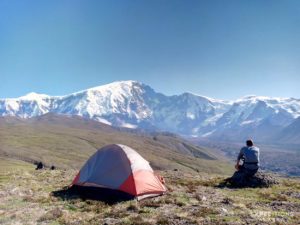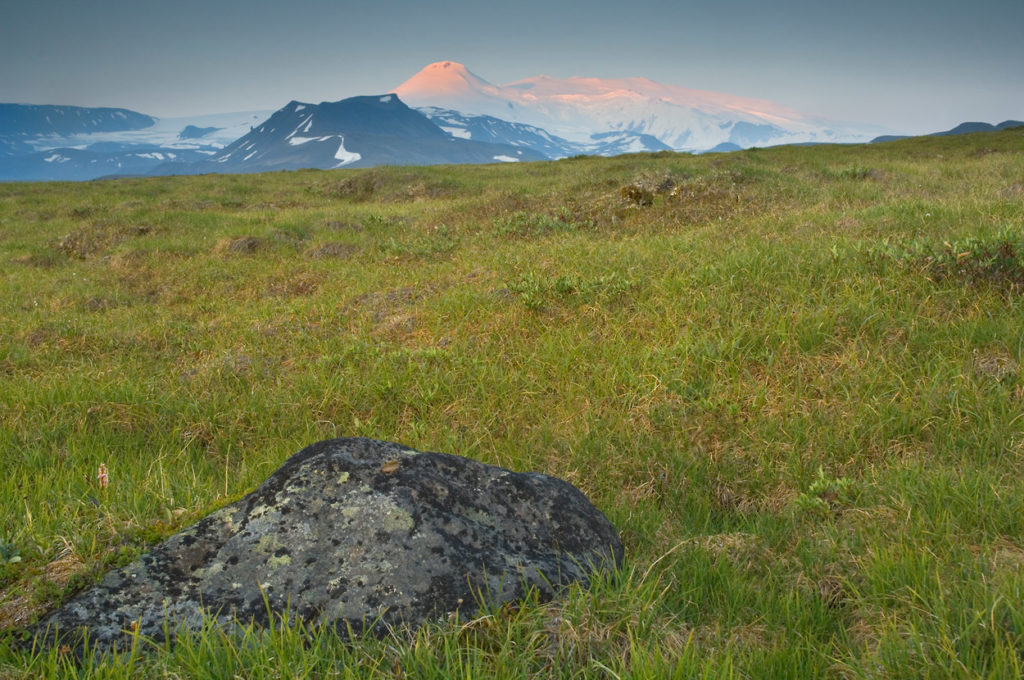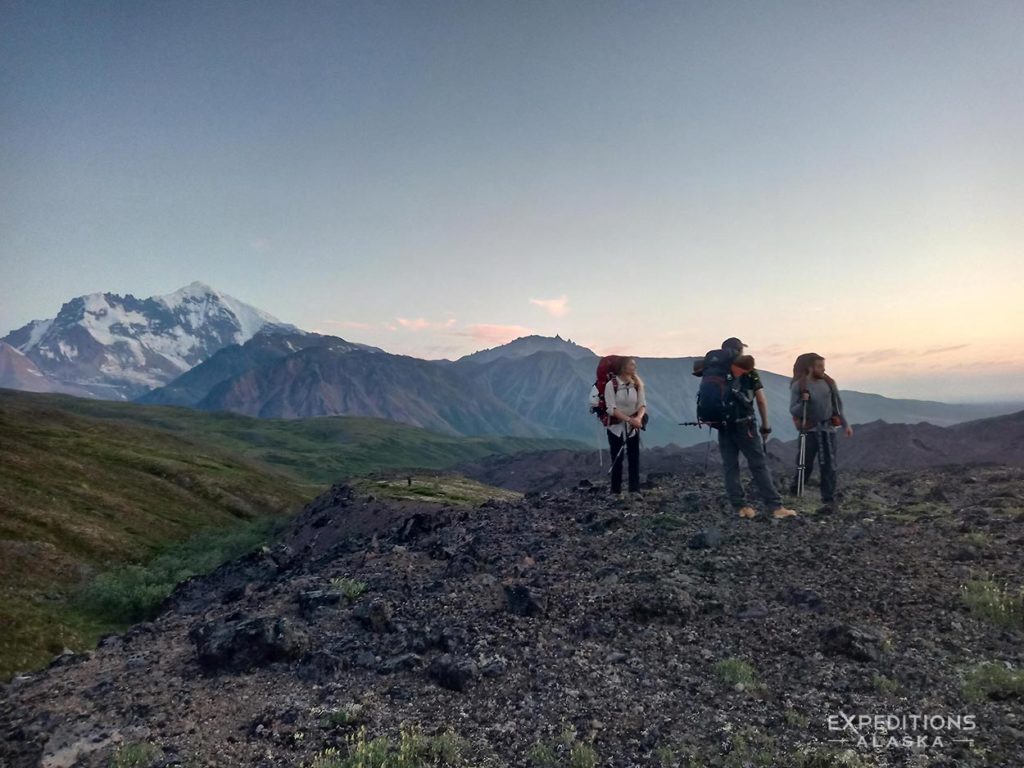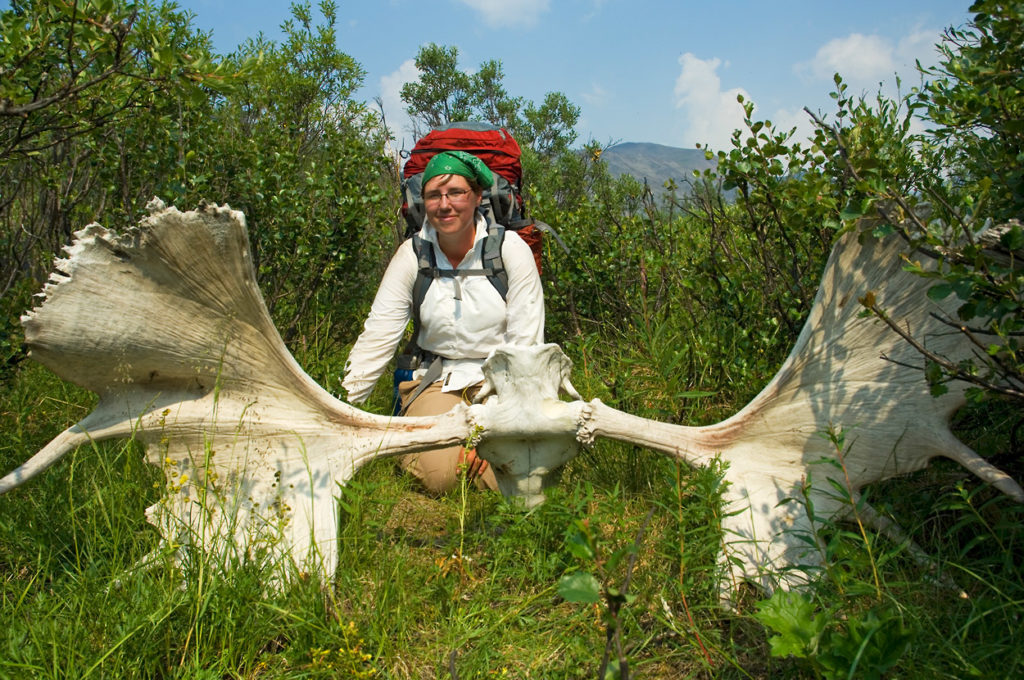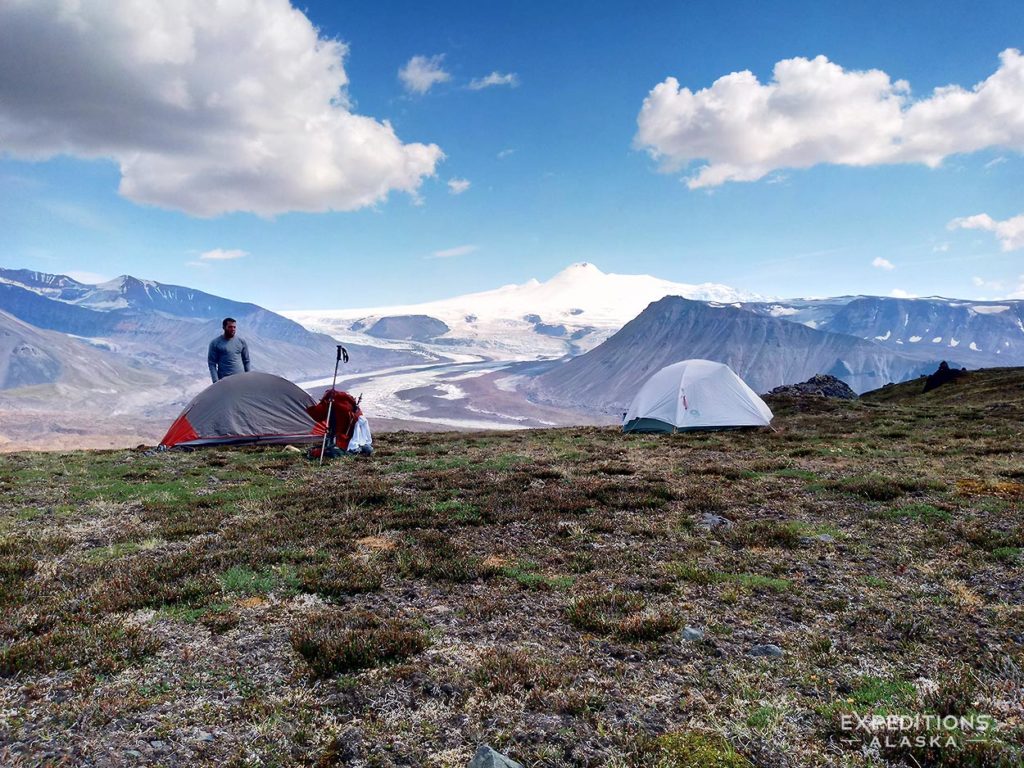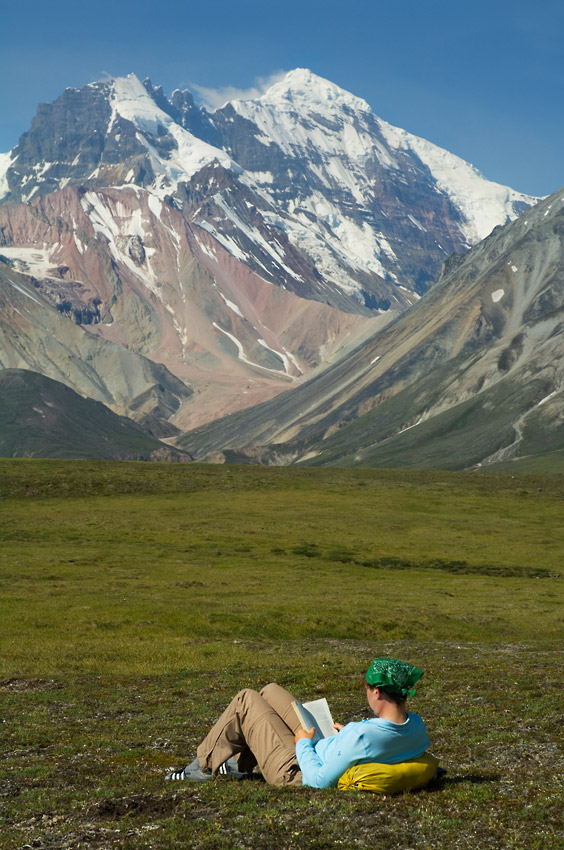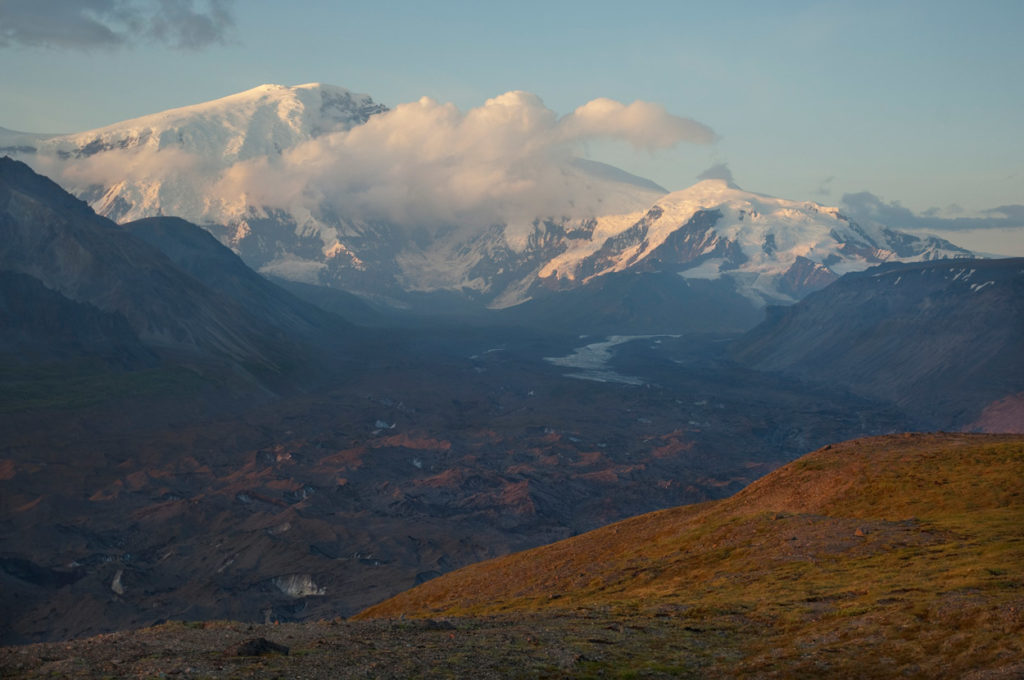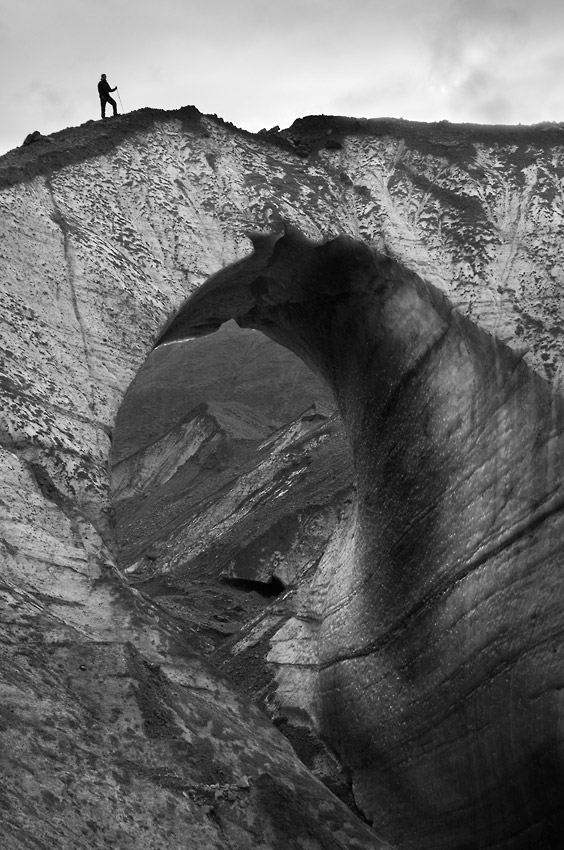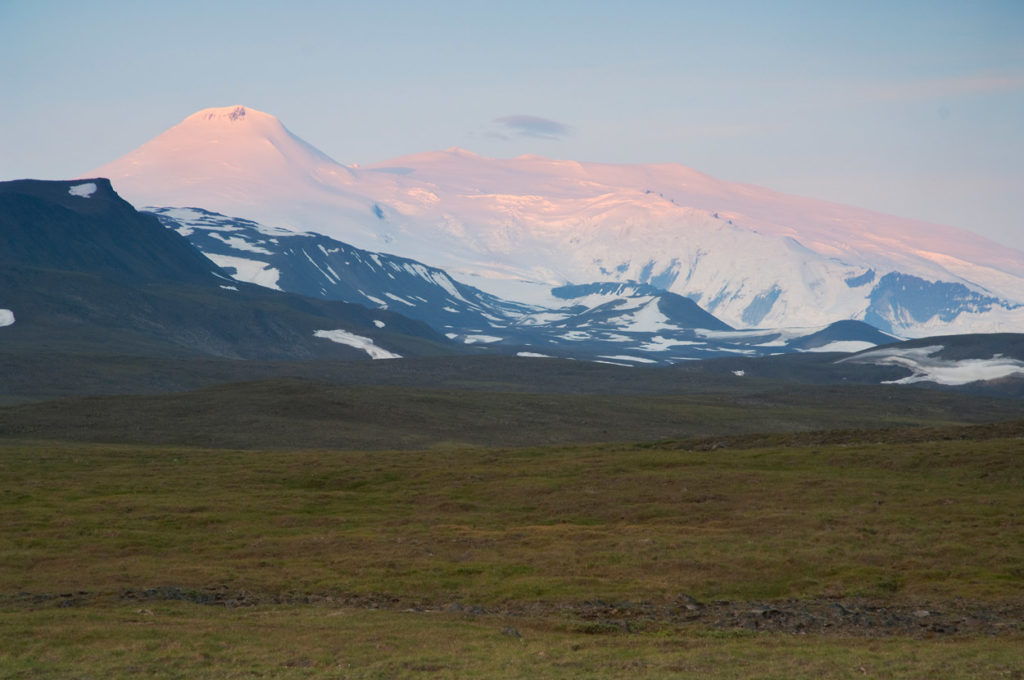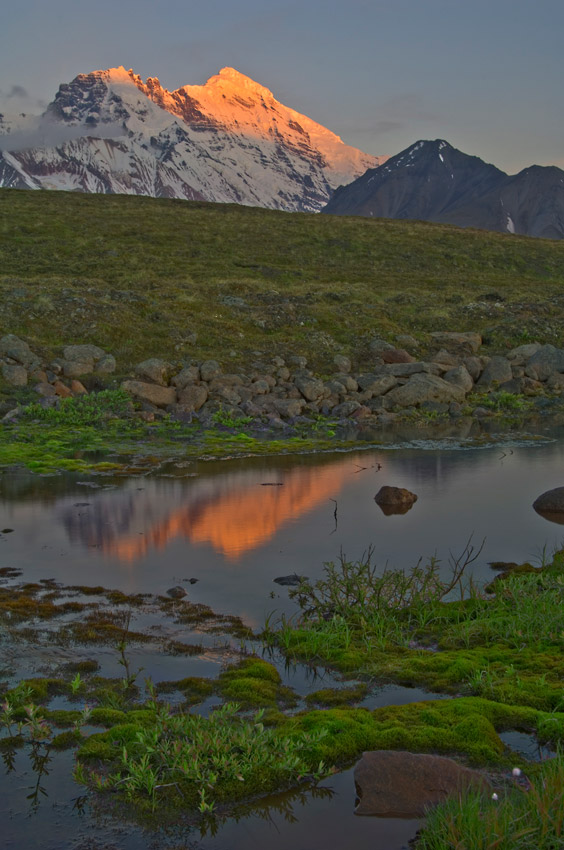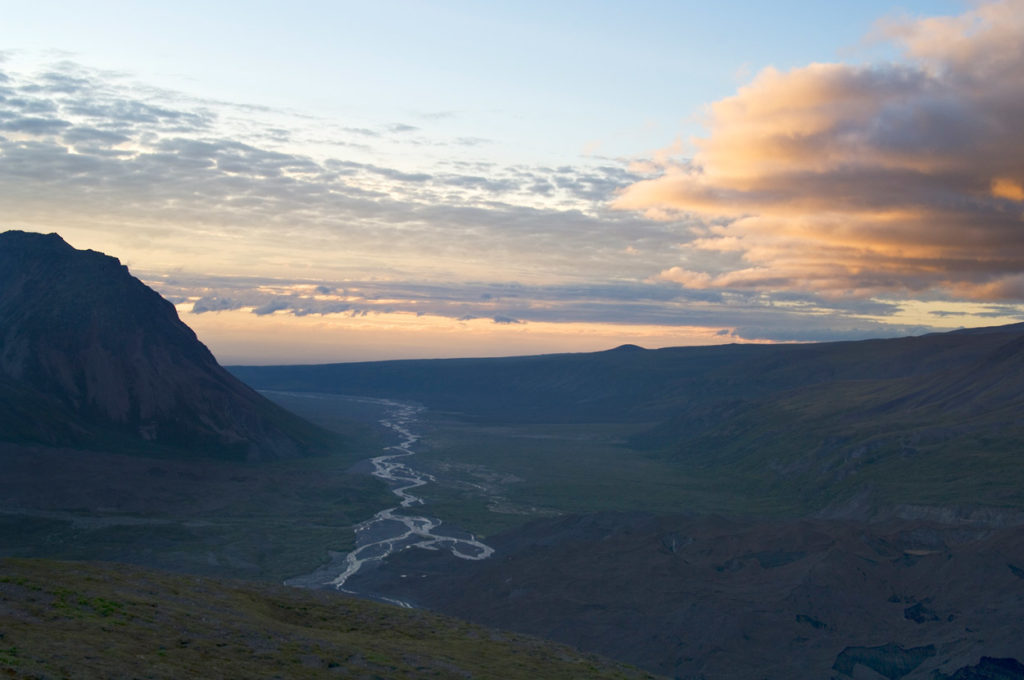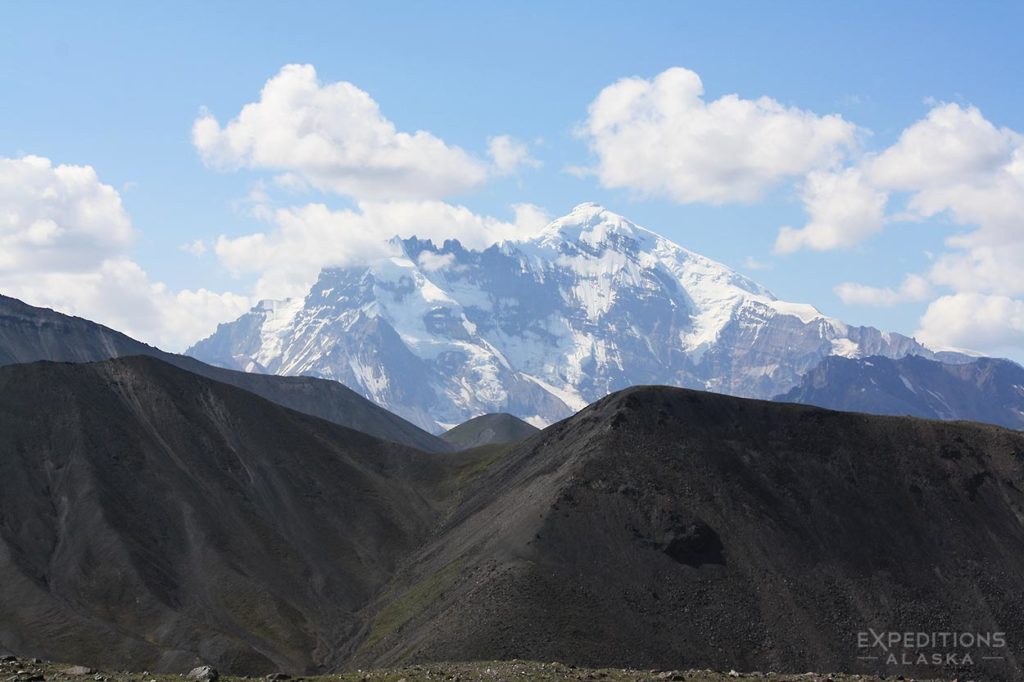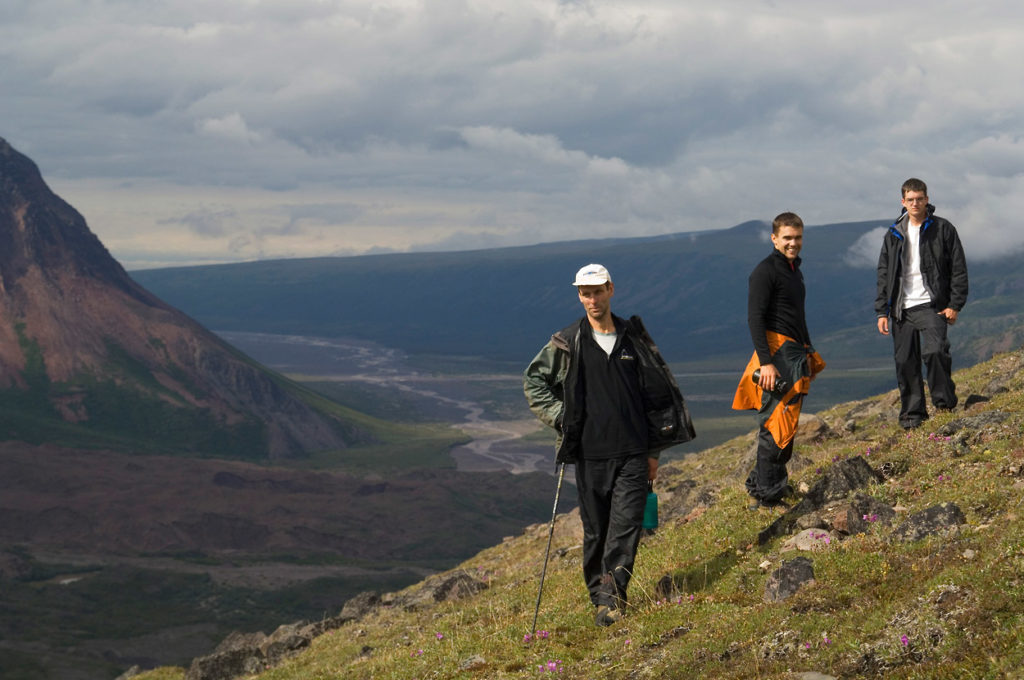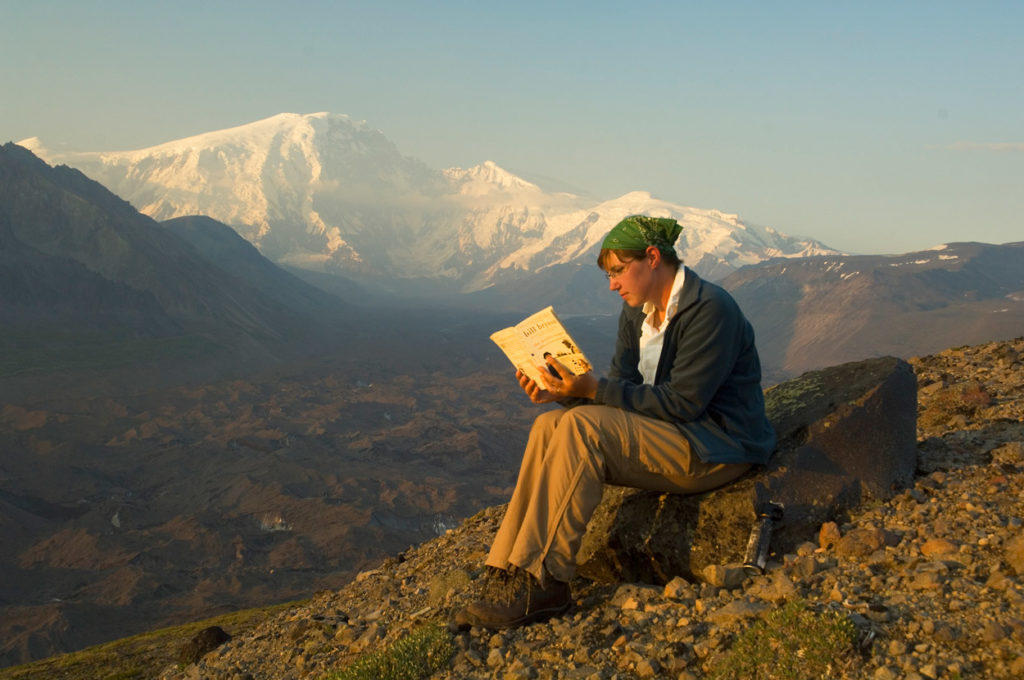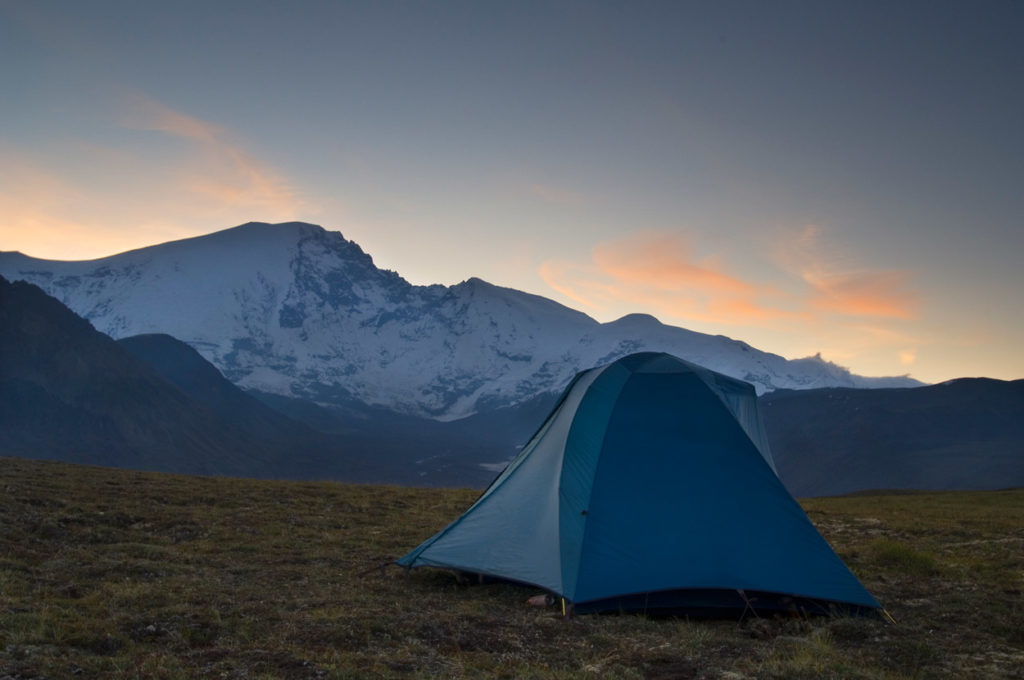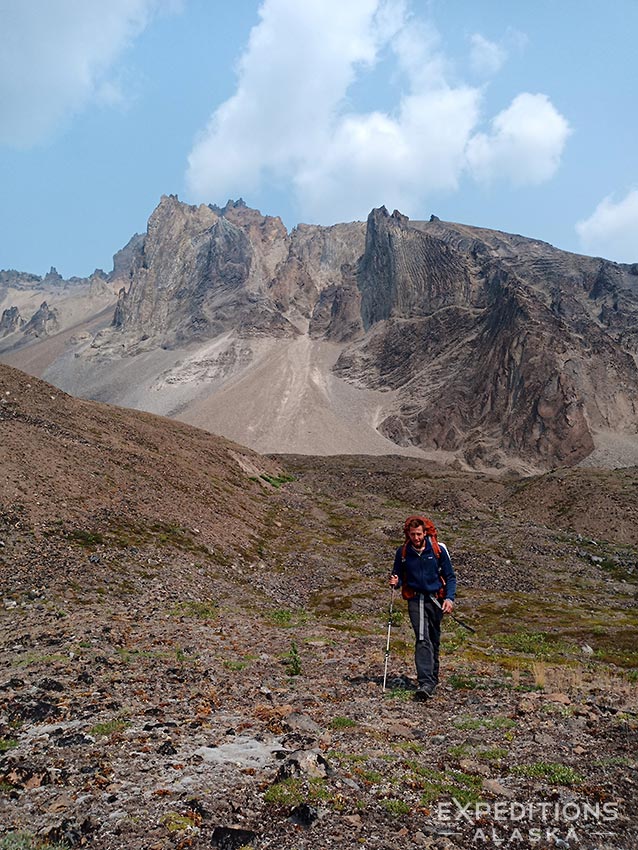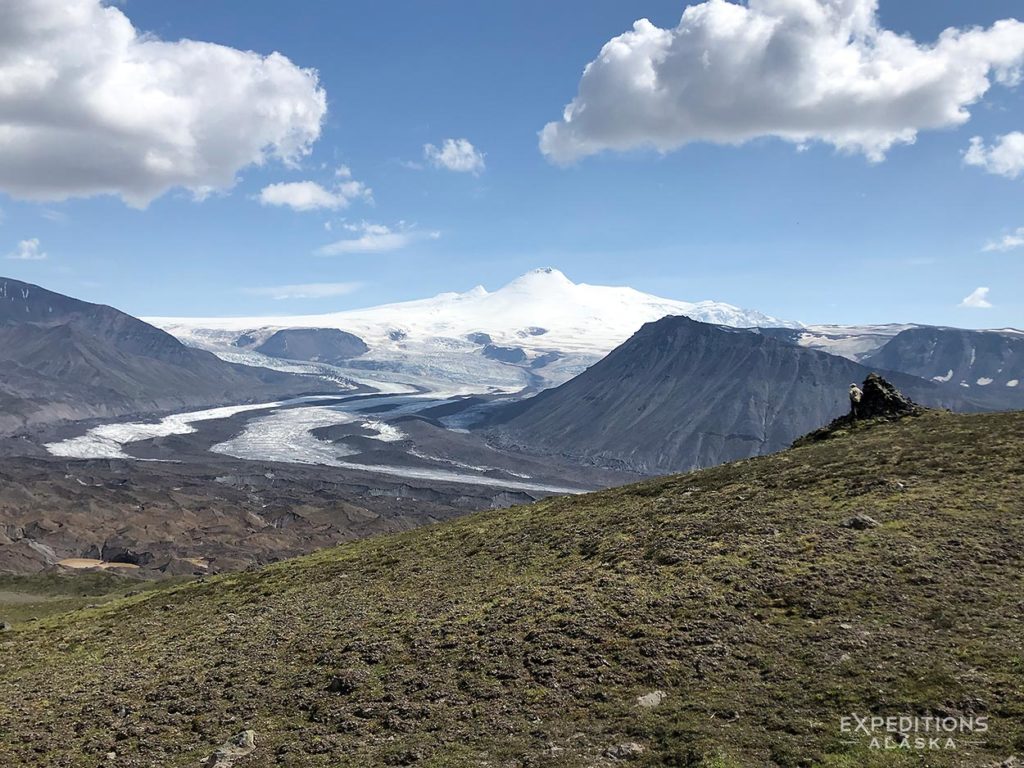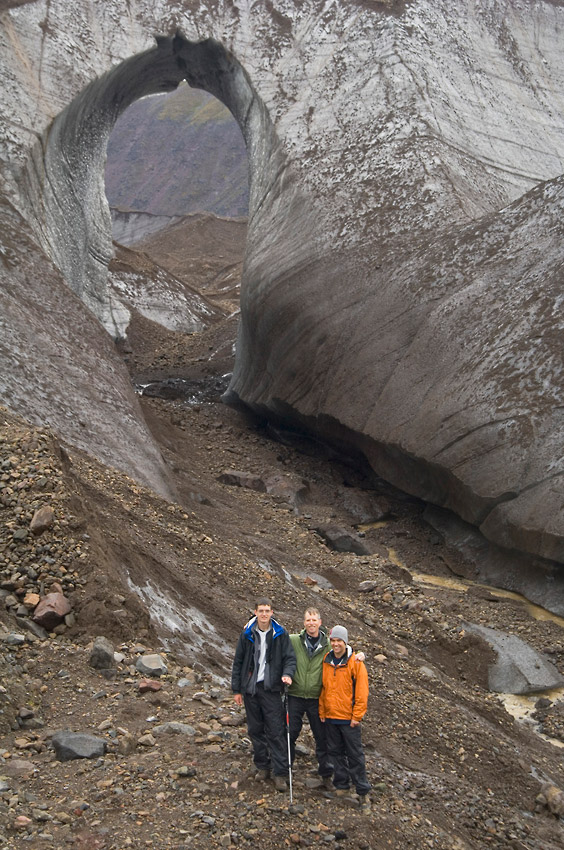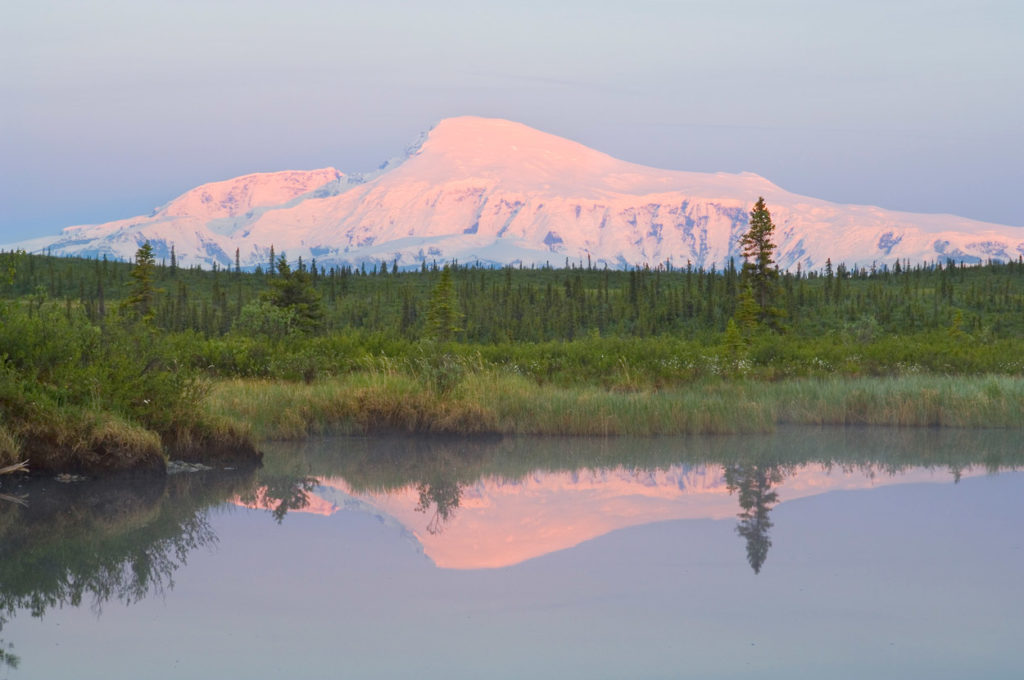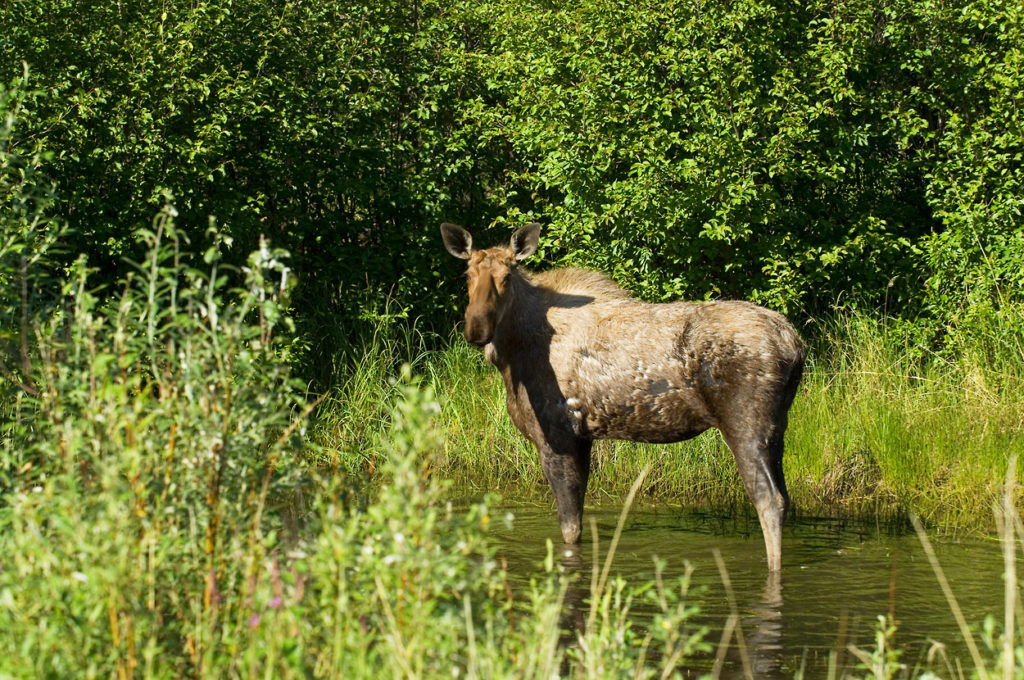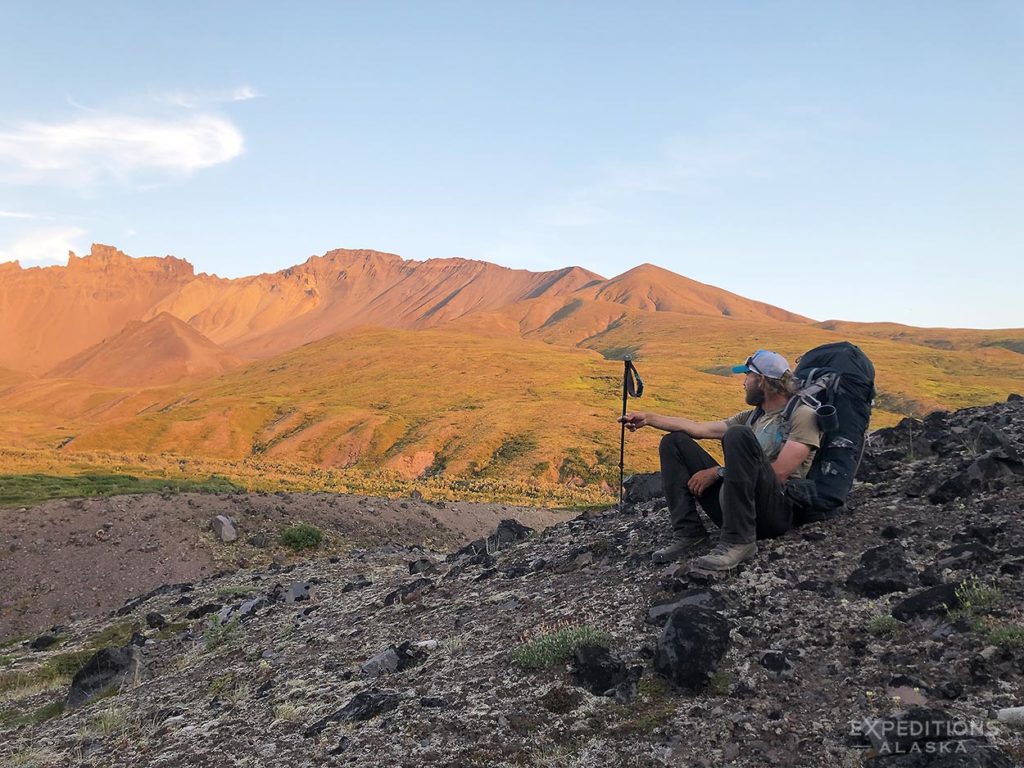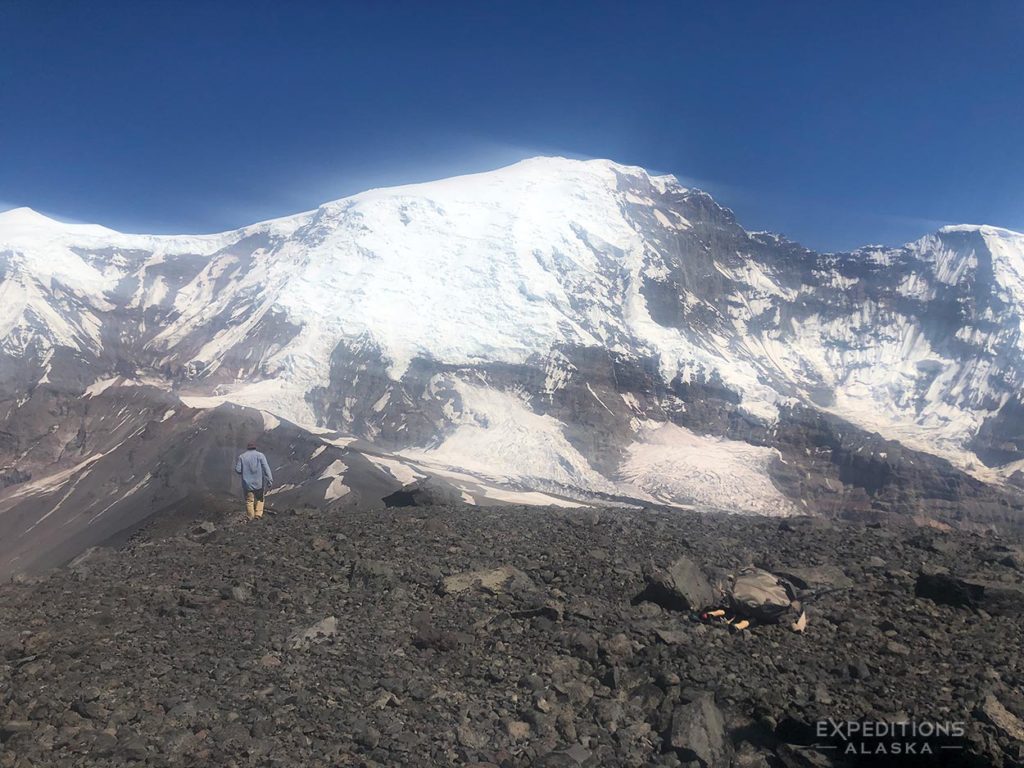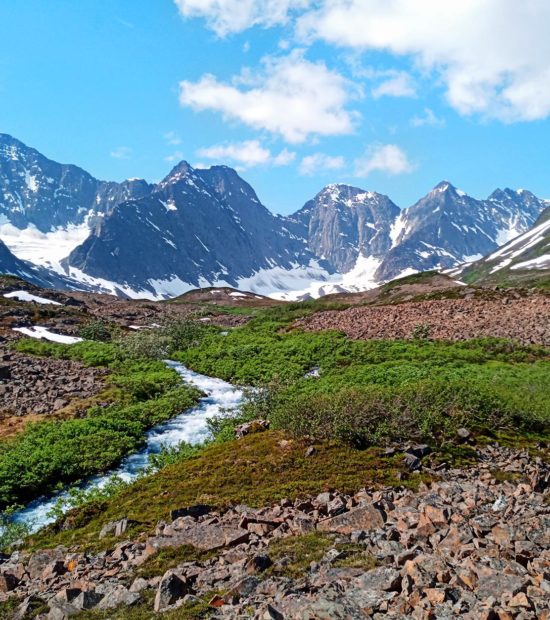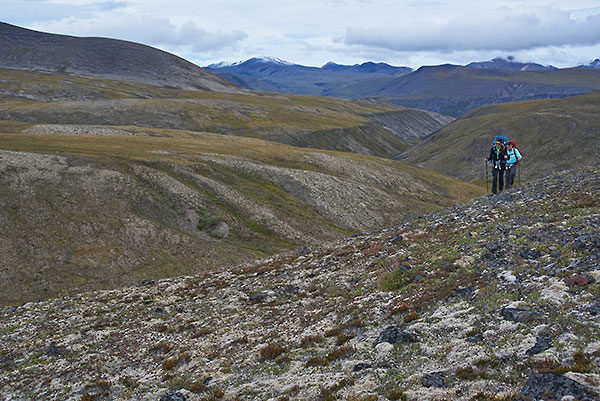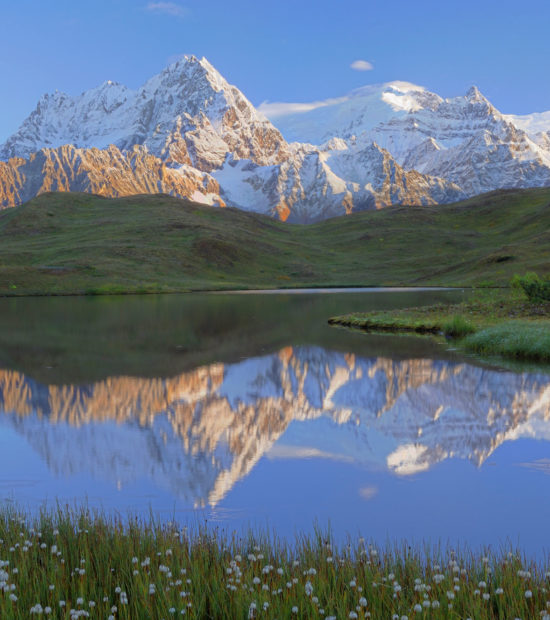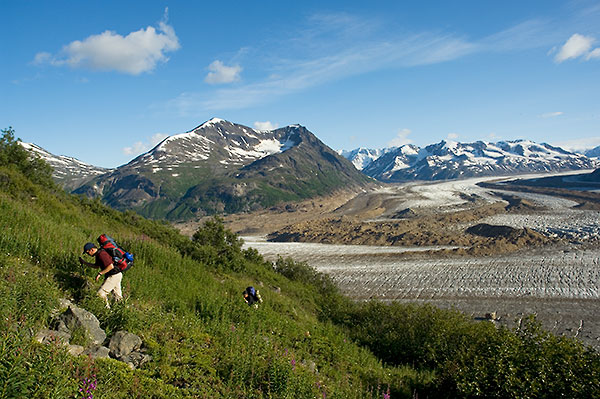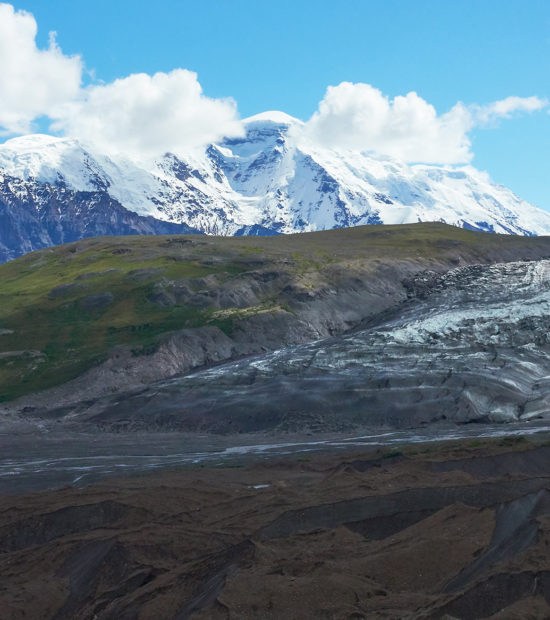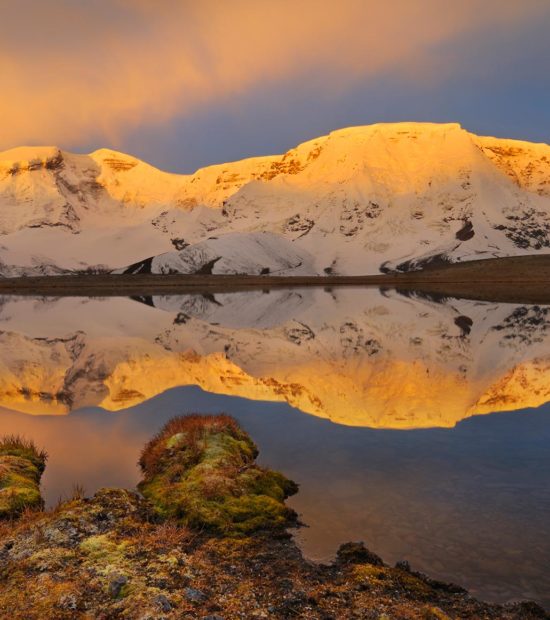Your Hike
Generally, this trip works great for those folks looking for some big mountain views without too much strenuous effort. It’s a bit of a chore to clamber up on to the Plateau, but only a fairly short walk. Once on the Plateau, we can basecamp, with some killer views right from camp, and day hike, or continue on south and explore the high country here. The hiking on the Plateau is fairly easy, wide open tundra, no brush, no moraine, etc. The descent off the Plateau isn’t too bad, though it’s steep in parts; slow and easy wins that race.
The walk down the Dadina river is a mixture of boreal forest, as we go through the spruce forest and stands of Cottonwood. Expect to encounter some bushwhacking as well.
If the river level isn’t too high we can venture out of the forest onto the broad riverbed and hike over the gravel bars, avoiding the forest all together. At times we’ll find old bison trails through that forest that make travel easy.
The bison here are Plains bison, imported into Alaska half a century ago or more. There are only 2 herds of them in the park. Wood bison lived here centuries ago but were driven into extinction several hundred years back.
Overall, a great hike that few people ever make. It offers various possibilities to make it compatible with beginning to advanced hiking levels.
The Place
Wrangell Mountains
Almost entirely volcanic mountains, the Wrangells include both the second the third highest volcanoes in the US. Mount Wrangell, lying immediately south of our trek, is still active, and is often seen venting during the winter. In fact, it’s venting out my window as I write this. Pretty neat.
The Wrangells are contagious with three other major mountain ranges in Alaska, the St. Elias range (to the southeast), the Chugach (to the south and west) and the Alaska Range to the north and east. This melting pot of mountains provides some simply astonishing views.
To give you a small idea of the scale of these mountains. Mt. Zanetti is approximately the same height and mass as Mt. St. Helens in Oregon. See image below.
River Names
Both the Sanford and the Dadina River both drain from the Wrangell Mountains into the well known Copper River (also called the Ahtna River, after the native people of the region). “Na” is the Ahtna word for River (Aht-Na translates as River People or People of the River. The Copper River has long been a critical lifeblood to these people.
Many of the official river names in the area end in “Na”: Dadina, Nizina, Lakina, Kuskulana, Chitina, and so on. It’s a little bit absurd that we call these waterways Dadina River, for example, when the “na” in Dadina already stands for “river”.
Chiti is the Ahtna’s word for Copper, so “Chitina River” actually translates as “CopperRiver River”.
Trip Logistics
We’ll pick you up at your hotel in Anchorage and drive to the park. We fly in to the Sanford River from the Glennallen area, which is a few hours drive from Anchorage.
You can leave personal items and an overnight bag in the van.
At the end of our hike we’ll fly back to Glennallen where we can grab some lunch and hit the road for Anchorage. You should be back in Anchorage at your hotel by approximately 6pm at the latest.
As with all logistics and itineraries involving Alaska backcountry trips, the overarching caveat is “this is the plan – we’ll see how it goes”. Weather is always a factor for fly-in/fly-out backcountry trips.

